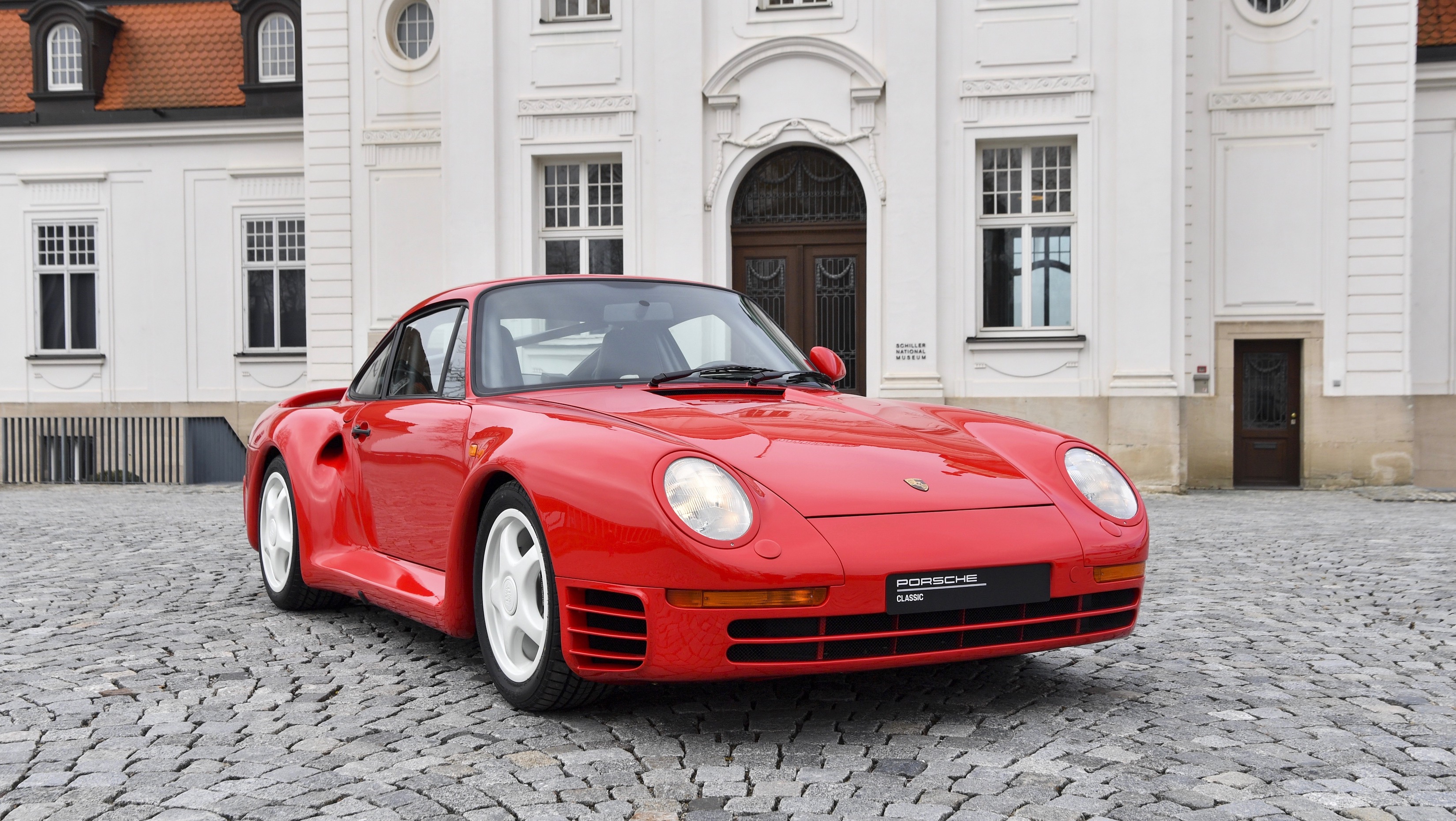Tech Talk | Seven different types of turbochargers
Turbochargers, the quintessential replacement for displacement, are inevitable nowadays. Here are seven types of turbos that are innovatively bridging performance and efficiency.
 The iconic Porsche 959 with a 450hp, 2.85-litre, 6-cyl engine with sequential twin turbos
The iconic Porsche 959 with a 450hp, 2.85-litre, 6-cyl engine with sequential twin turbosPurists love naturally aspirated engines but let’s admit, free breathing engines are unapologetic when it comes to emissions and they’re being shown the door. Turbos clearly have a better future given that an increasing number of brands are employing this technology in their cars. With the advent of this technology, engines are becoming smaller, more efficient and yet ensure the oomph the heart craves for. However, most of us are familiar with turbo-lag, which refers to the delay in torque delivery due to the time taken by a turbo to spool up. The wait can be annoying but engineers have come up with multiple solutions to address this issue.
Single turbo
Single turbos are the most cost effective. Larger single turbos provide more boost at higher rpms but come at the cost of a greater turbo lag while smaller turbos spool up faster providing better bottom end grunt. Nevertheless, turbochargers are often compact on mass market cars and match larger naturally aspirated engines in performance. For instance, a Hyundai Creta Turbo with a small 1.4-litre turbo-petrol engine produces 140hp while its stablemate, the Elantra produces only 10hp more and almost 100Nm less torque with its much larger 2-litre naturally aspirated engine.
Twin turbo
Twin turbos normally come under two configurations – parallel or sequential. Parallel turbos use one turbo on each cylinder bank and even if they provide a lot more boost, the advantages and drawbacks are similar to that of single turbos. Meanwhile, sequential turbos address lag by employing a small turbo and a large one. With smaller turbos spooling up faster, they allow ample bottom end grunt and when the revs rise, the larger turbo kicks in allowing a wider torque curve. The 1981 Maserati Biturbo was the first ever car to feature a parallel twin turbo set-up while the Mk4 Toyota Supra and Porsche 959 are some cars that nailed the sequential twin turbo set-up.
Twin-scroll turbo
Twin-scroll turbo eliminates the irregularities of a regular turbo. Cylinders in an ICE fire at irregular intervals, releasing combustion gases in irregular pulses. This interference of exhaust gases doesn’t allow the ICE to harness its power in its entirety. ICEs with twin-scroll turbos, fire alternate cylinders at a time (1-4 and 2-3 in four pot engines), allowing exhaust gases to release in a synchronized alternating sequence. As a result, irregular exhaust gas pulses are eliminated and there’s more power and efficiency. The BMW 330i M Sport uses this type of engine.
Variable Geometry Turbo
VGTs are primarily employed in diesel engines. Unlike conventional turbos, VGTs use aerodynamically-shaped vanes that alter the area-to-radius ratio (area of the inlet to the radius of the turbine) to reduce lag. Low A:R ratio is used to spool the turbos at low rpms while the A:R ratio expands as the revs climb, allowing a larger air intake. This is one of the most innovative forms of turbocharging allowing a flat torque curve and minimal turbo lag. Many cars in India use VGT diesel engines, notably the Toyota Fortuner and the 90hp versions of the FCA sourced 1.3-litre diesel engines (now discontinued) in the Maruti Suzuki Vitara Brezza, Ciaz and S-Cross.
Variable Twin Scroll Turbo
Variable twin-scroll turbos combine the technology of VGTs and twin-scroll turbos. It uses the same principle of high and low A:R ratios for higher and lower rpms. However, the release of exhaust gases is now controlled by a variable valve. At lower rpms, the valve releases air into the smaller turbo via a single scroll for better bottom end performance. As the vehicle gains speed, the valve gradually opens up the second scroll allowing air into the large turbocharger as well. Theoretically, this technology eliminates turbo-lag better than rest of the turbo set-ups allowing wider peak power threshold. However, cost and complexity are two significant downsides.
Quad Turbo
We know you’re thinking of the W16 nuclear reactor from the Bugatti hypercars. But BMW too has entered this game with its new B57 quad turbocharged diesel engine. If you’ve read till here, you must have noticed a pattern. Smaller turbos for explosive low-end grunt and larger ones for additional momentum in the higher revs. The BMW unit, produced by BorgWarner applies this principle with two small turbos and two large ones, fitted onto the brand’s 3-litre straight-six diesel engine. Internationally, it’s available in the 750d xDrive that drives its passengers luxuriously to a 100kmph in just 4.7 seconds thanks to thunderous power figure of 400hp and 750Nm of torque.
Electric Turbo
The past couple of years have brought the capability of electric motors to the fore. Can e-power then be used to eliminate turbo lag? A turbo mated to an electric compressor can provide instant boost to the engines, eliminating lag while the actual turbo spools up. However, the integration of an electric motor and its battery can be complex and only a few brands have applied this technology in their cars. The Audi SQ7 is the first production car to sport this technology while the Volvo S90, V90 and XC90 too pack this technology under the D5 Powerpulse trims internationally.


